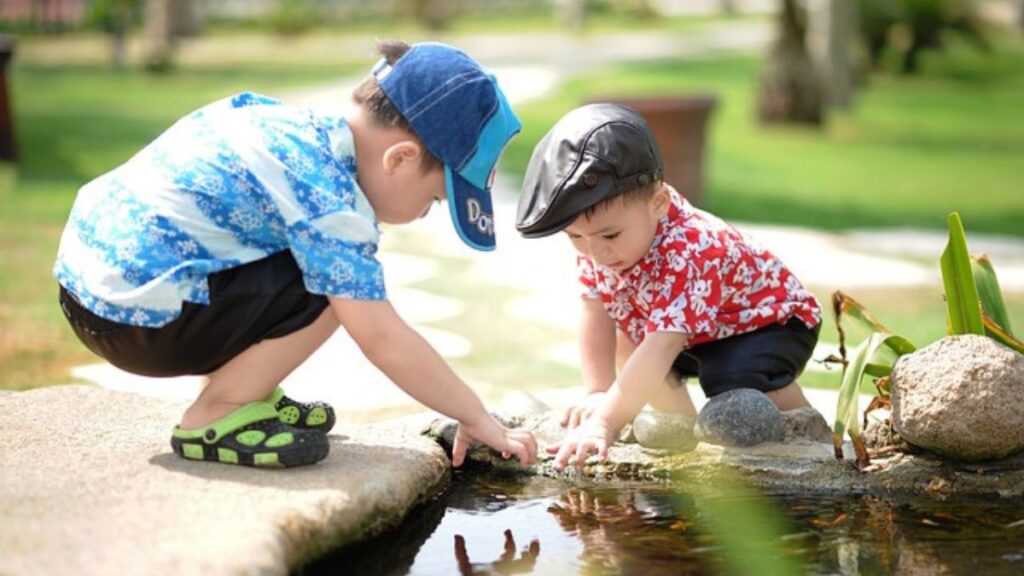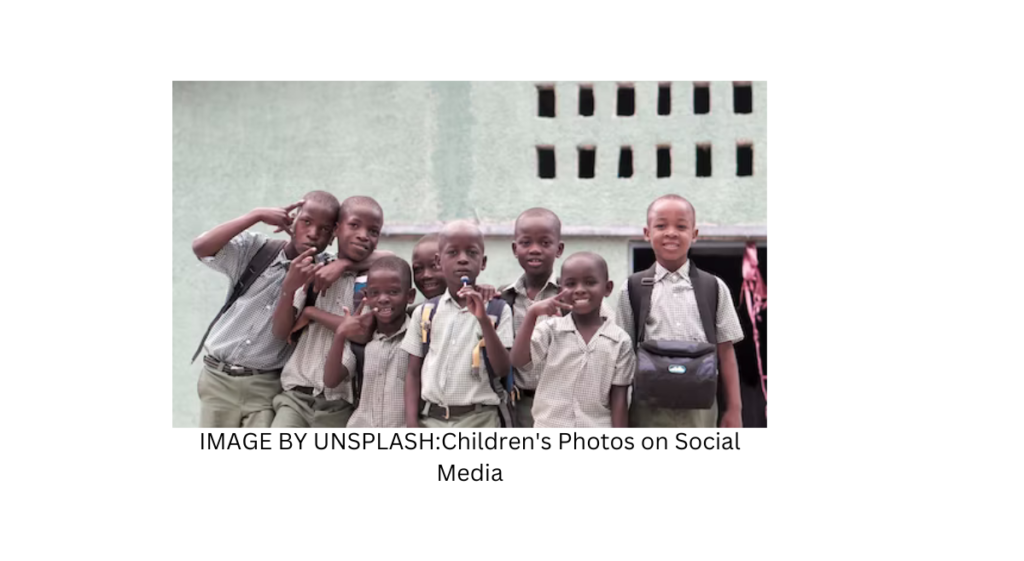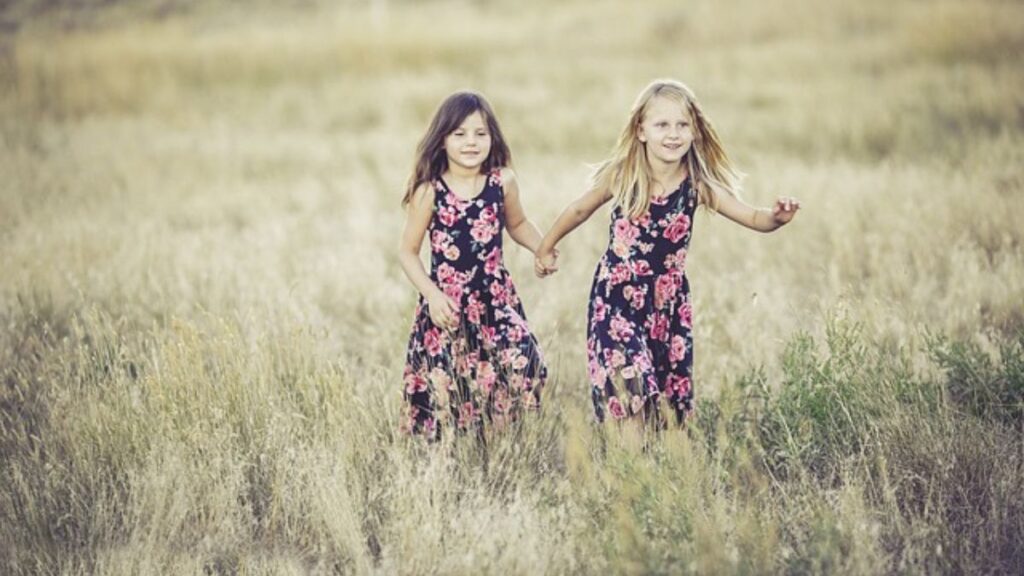Introduction:
“Exploring the Perils: Why Sharing Children’s Photos on Social Media Demands Caution”

In this digital age, social media has become an integral part of our lives, offering a platform for sharing cherished moments with friends and family. However, amidst the joy and connection, lies a pressing concern: the safety and privacy of our children. Posting children’s photos on social media might seem innocent, but it can expose them to potential dangers and risks. In this article, we delve into the hidden hazards of sharing such images and explore how we can safeguard the innocence of our little ones online.
“What are the risks associated with sharing children’s photos on social media, and what strategies can we employ to protect our children’s privacy and innocence in the digital realm?”
- Digital Footprint and Privacy Concerns:

Every photo shared online contributes to a child’s digital footprint, leaving a trail that can follow them throughout their lives. Information, including their location, school, interests, and relationships, can be pieced together by malevolent individuals. Cybercriminals and identity thieves might exploit this data for nefarious purposes, compromising the child’s privacy and security.
- Strangers with Malicious Intent:
Publicly sharing photos of children opens them up to a vast audience, including strangers with malicious intent. Child predators and cyberbullies lurk on social media platforms, and seemingly innocent photos can be taken out of context or used inappropriately. Protecting children from such threats should be a top priority for parents and guardians.
- Impact on Mental and Emotional Well-being:
Children, especially teenagers, are susceptible to peer pressure and online judgment. Posting their photos without consent could lead to anxiety, low self-esteem, or even cyberbullying. Additionally, once an image is shared, it can be challenging to control its circulation, further exacerbating the emotional impact on the child.
- Potential Legal Issues:
Sharing children’s photos on social media might inadvertently lead to legal issues. Consent becomes a crucial factor, especially when parents separate or divorce. In such cases, disputes over online photo sharing could escalate into legal battles, affecting the child’s well-being and stability.
- Mitigating the Risks:
a. Review Privacy Settings: Ensure your social media accounts have strict privacy settings, limiting access to close friends and family only. Avoid sharing children’s photos publicly.
b. Obtain Consent: Before posting any pictures of children, seek explicit consent from the child’s parents or legal guardians. Respecting their wishes helps maintain trust and protects the child’s privacy.
c. Be Mindful of Content: Avoid posting images that reveal personal information, such as school names, addresses, or specific locations.
d. Monitor Online Activity: Keep a close eye on your child’s online presence and address any concerns promptly. Encourage open communication about their experiences on social media.
e. Educate Children about Online Safety: Teach your children about the potential risks of sharing personal information online. Instilling good digital citizenship practices from an early age can empower them to protect themselves.
What are the disadvantages of sharing pictures of children on social media and how can they be avoided?

Disadvantages of Sharing Pictures of Children on Social Media:
- Privacy and Security Risks: Sharing images of children on social media can expose them to privacy and security risks. Personal information, such as their location, school, or routine, may inadvertently be disclosed, making them vulnerable to potential threats like cyberbullying or stalking.
- Unintended Audience: When pictures are shared publicly, they can reach a wide and unknown audience. Strangers, including child predators, might have access to these images, which poses a significant danger to the child’s safety.
- Long-term Digital Footprint: Images shared on social media contribute to a child’s digital footprint, potentially affecting their online reputation in the future. These photos can resurface years later and be difficult to remove or control.
- Emotional Impact: Posting pictures without a child’s consent, especially as they grow older, can lead to feelings of embarrassment, invasion of privacy, or even cyberbullying. It may impact their self-esteem and mental well-being.
- Legal Concerns: Sharing pictures of children without the proper consent from parents or guardians can lead to legal issues, especially in cases of separated or divorced families.
Ways to Avoid the Disadvantages:
- Review Privacy Settings: Ensure your social media accounts have strong privacy settings, limiting photo visibility to trusted friends and family members only.
- Seek Consent: Always obtain explicit consent from the child’s parents or legal guardians before sharing any images. Respect their decisions regarding online photo sharing.
- Be Mindful of Content: Avoid sharing pictures that reveal sensitive personal information, such as school names, addresses, or specific locations.
- Limit Public Sharing: Restrict sharing pictures of children publicly. Consider using private messaging or secure photo-sharing platforms for close family and friends.
- Educate Yourself and Your Children: Stay informed about online safety best practices, and educate your children about the potential risks of sharing personal information on social media.
- Monitor Online Activity: Keep a close eye on your child’s online presence and address any concerns promptly. Encourage open communication about their experiences on social media.
- Think Long-term: Consider the potential impact of sharing pictures now on your child’s future digital footprint and reputation.
By implementing these practices, parents and guardians can help protect their children from the potential disadvantages of sharing pictures on social media, creating a safer online environment for their little ones.
What steps can I take to protect my child’s privacy while still sharing moments with friends and family online?
Protecting your child’s privacy while sharing moments online requires careful consideration and proactive steps. Here are some strategies you can follow:

- Understand privacy settings: Familiarize yourself with the privacy settings on the platforms you use for sharing photos and updates. Adjust these settings to control who can view and interact with your posts.
- Be selective about what you share: Avoid sharing sensitive information such as your child’s full name, birthdate, address, school name, or other identifying details. Stick to sharing general updates and photos without divulging too much personal information.
- Use privacy features: Many social media platforms offer features like private accounts, close friends lists, or restricted audiences. Utilize these features to limit who can see your posts to trusted friends and family members.
- Ask for consent: Before sharing photos or updates that include your child, consider asking for their consent if they’re old enough to understand. Respect their privacy preferences and avoid sharing anything they’re uncomfortable with.
- Avoid geotagging: Refrain from tagging your location in posts or photos, as this can reveal your child’s whereabouts and compromise their safety.
- Regularly review your friends list: Keep your friends list updated and remove anyone you don’t trust or who doesn’t need to see updates about your child.
- Educate friends and family: Inform friends and family members about your privacy concerns and ask them to refrain from sharing photos or updates about your child without your permission.
- Consider creating a separate, private sharing space: Instead of posting updates publicly on social media, consider creating a private group or using a secure family-sharing platform where you have more control over who can access the content.
- Watermark photos: Consider watermarking photos with a discreet mark or logo to deter unauthorized use or sharing.
- Regularly monitor and adjust settings: Stay vigilant about reviewing and adjusting your privacy settings as social media platforms often update their features and policies.
By implementing these strategies, you can strike a balance between sharing moments with friends and family online while safeguarding your child’s privacy.
Conclusion:
While sharing moments of our children’s lives on social media can be heartwarming, we must be aware of the hidden hazards that come with it. Protecting innocence online requires a conscious effort to balance the desire to share with the need to safeguard our children from potential dangers. By being proactive, respecting privacy, and educating both ourselves and our children, we can create a safer digital environment where their innocence can thrive without unnecessary risks.







